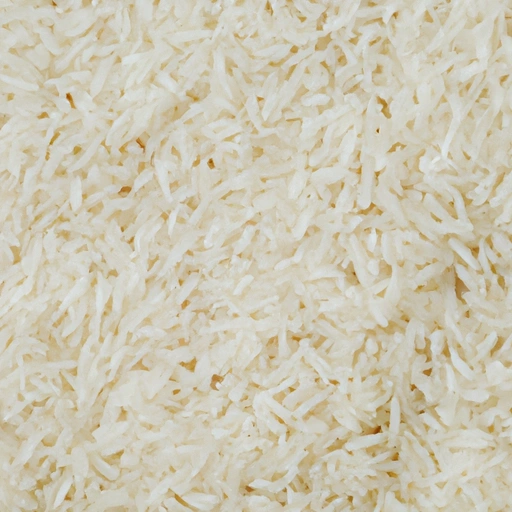White Rice
Description

White rice is a refined grain that is widely consumed around the world and serves as a primary dietary staple for over half of the world's population. It is the end product of milling and polishing brown rice, which involves the removal of the outer bran layer and germ, leaving behind the starchy endosperm. This process gives white rice its characteristic color and texture. Available in numerous varieties such as long-grain, medium-grain, and short-grain, white rice is valued for its versatility and ability to complement a multitude of dishes.
Common uses
White rice is commonly used as a side dish, a base for sauces and gravies, or as a primary ingredient in dishes such as risottos, sushi, and rice puddings. It is also ground into flour and used in rice noodles, rice paper, and various gluten-free products.
Nutritional value
Calories
A standard serving of cooked white rice, which is about 1 cup (195g) or roughly 240 mL, provides about 205 kcal (calories).
Protein
That same serving size delivers about 4.25 grams of protein.
Fat
White rice is very low in fat, containing less than 0.5 grams per serving.
Carbohydrates
Carbohydrates are the primary macronutrient in white rice, with a serving containing approximately 44.5 grams.
Vitamins
While milling removes many nutrients, some white rice is enriched with vitamins such as folic acid (B9), and it may contain small amounts of other B vitamins.
Minerals
Enriched white rice can include minerals such as iron and calcium, but it is not a significant source of minerals compared to whole grains.
Health benefits
White rice is a good source of quick energy and is easily digestible, making it a suitable choice for those with digestive concerns. When fortified, it can contribute to the intake of essential nutrients like folic acid, which is important for pregnant women.
Potential risks
As a refined carbohydrate with a high glycemic index, excessive consumption of white rice may contribute to blood sugar spikes and has been associated with an increased risk of type 2 diabetes. Its low fiber content compared to whole grains might also impact digestive health negatively if not balanced with other fiber-rich foods.
Common recipes
White rice is featured in a vast array of recipes including sushi from Japan, paella from Spain, pilafs from the Middle East, stir-fries from China, and jambalaya from the Southern United States.
Cooking methods
White rice can be boiled, steamed, simmered, or fried. Different cooking methods can result in textures ranging from fluffy and separate grains to creamy and porridge-like.
Pairing with other ingredients
White rice pairs well with a variety of ingredients including vegetables, beans, chicken, beef, seafood, and tofu. It also absorbs flavors from herbs, spices, and broths effectively.
Summary
White rice is a refined, versatile grain enjoyed across the globe in countless dishes. While it provides energy and can be enriched with nutrients, its lower fiber content and high glycemic index mean it should be consumed in moderation as part of a balanced diet. White rice's culinary uses are nearly limitless, and it remains a beloved staple in many cultures.